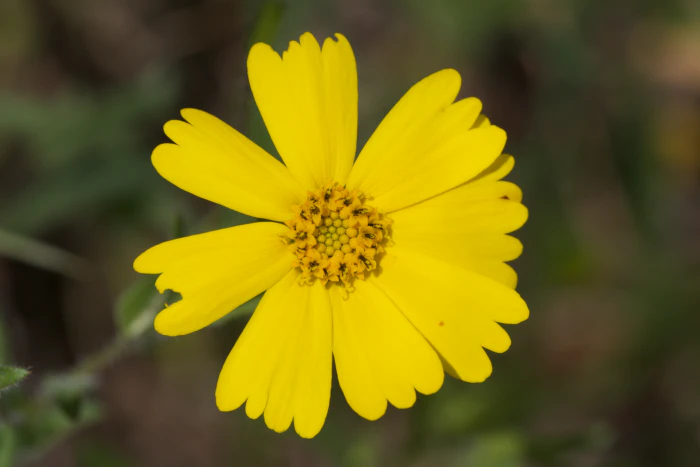Woodland Tidytips
(Layia gaillardioides)
Woodland Tidytips (Layia gaillardioides)
/
/

© Arvel Hernandez
CC BY 4.0
Image By:
© Arvel Hernandez
Recorded By:
Copyright:
CC BY 4.0
Copyright Notice:
Photo by: © Arvel Hernandez | License Type: CC BY 4.0 | License URL: http://creativecommons.org/licenses/by/4.0/ | Uploader: arvel | Publisher: iNaturalist |

























Estimated Native Range
Climate Requirements for Lexington, South Carolina
| This Plant | Your Site | Plant Suitability for Your Location | ||
|---|---|---|---|---|
| • Precipitation | 9" - 73" | 46" | Aquatic | Aquatic |
| • High Temp. | 68°F - 95°F | 92°F | Your summer temperatures are normal for this plant. | Excellent |
| • Low Temp. | 30°F - 44°F | 33°F | Your winter temperatures are normal for this plant | Excellent |
This plant may not grow well at your location - your precipitation is too high.
Summary
Layia gaillardioides, commonly known as woodland tidytips, is an aromatic annual herb endemic to California, specifically adapted to the unique serpentine soils found in the chaparral, coastal sage scrub, and open woodlands of the northern and central parts of the state. It can grow up to 3 feet tall and is characterized by dark glandular hairs that cover the stems. The leaves are linear or lance-shaped, with the lower ones often lobed or toothed. From late winter to early summer, woodland tidytips produces showy flower heads with bright yellow ray florets surrounding a center of disc florets with distinctive purple anthers. The fruit is an achene, topped with a thick pappus of white or brown bristles, aiding in wind dispersal.
Woodland tidytips is valued for its vibrant flowers and pleasant aroma, making it a popular choice for wildflower gardens, native plant landscapes, and restoration projects. It is relatively low maintenance, requiring minimal water once established, and thrives in well-drained soils with full sun to part shade exposure. While not commonly afflicted by diseases, it can be susceptible to root rot in poorly drained soils. Gardeners should be aware that it may self-seed prolifically under favorable conditions.CC BY-SA 4.0
Woodland tidytips is valued for its vibrant flowers and pleasant aroma, making it a popular choice for wildflower gardens, native plant landscapes, and restoration projects. It is relatively low maintenance, requiring minimal water once established, and thrives in well-drained soils with full sun to part shade exposure. While not commonly afflicted by diseases, it can be susceptible to root rot in poorly drained soils. Gardeners should be aware that it may self-seed prolifically under favorable conditions.CC BY-SA 4.0
Plant Description
- Plant Type: Herb
- Height: 1-2 feet
- Width: 2-3 feet
- Growth Rate: Moderate
- Flower Color: White, Yellow
- Flowering Season: Spring, Summer
- Leaf Retention: Deciduous
Growth Requirements
- Sun: Full Sun, Part Shade
- Water: Low, Medium
- Drainage: Medium
Common Uses
Bee Garden, Butterfly Garden, Low Maintenance
Natural Habitat
Native to chaparral, coastal sage scrub, and open woodlands in northern and central California
Other Names
Common Names: Coastal Tidytips
Scientific Names: Layia gaillardioides, Aspilia laxa, Blepharipappus gaillardioides, Blepharipappus nemorosus, Caenotus longifolius, Conyza tuberosa, Conyza tuberosa, Dumerilia auriculata, Dumerilia crenata
GBIF Accepted Name: Layia gaillardioides